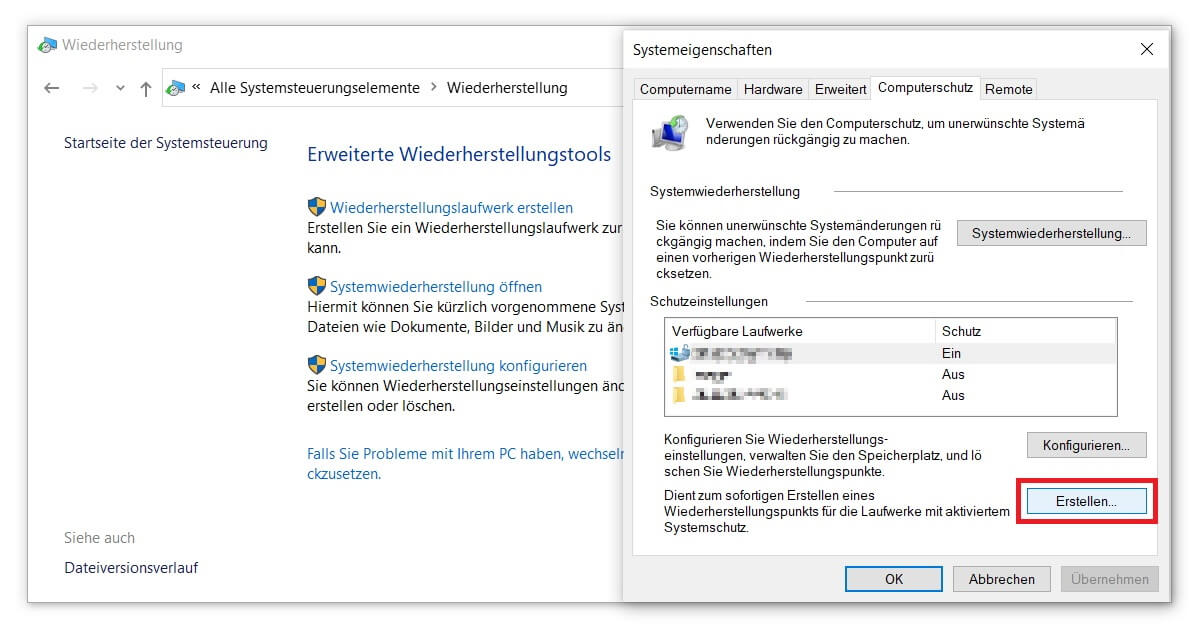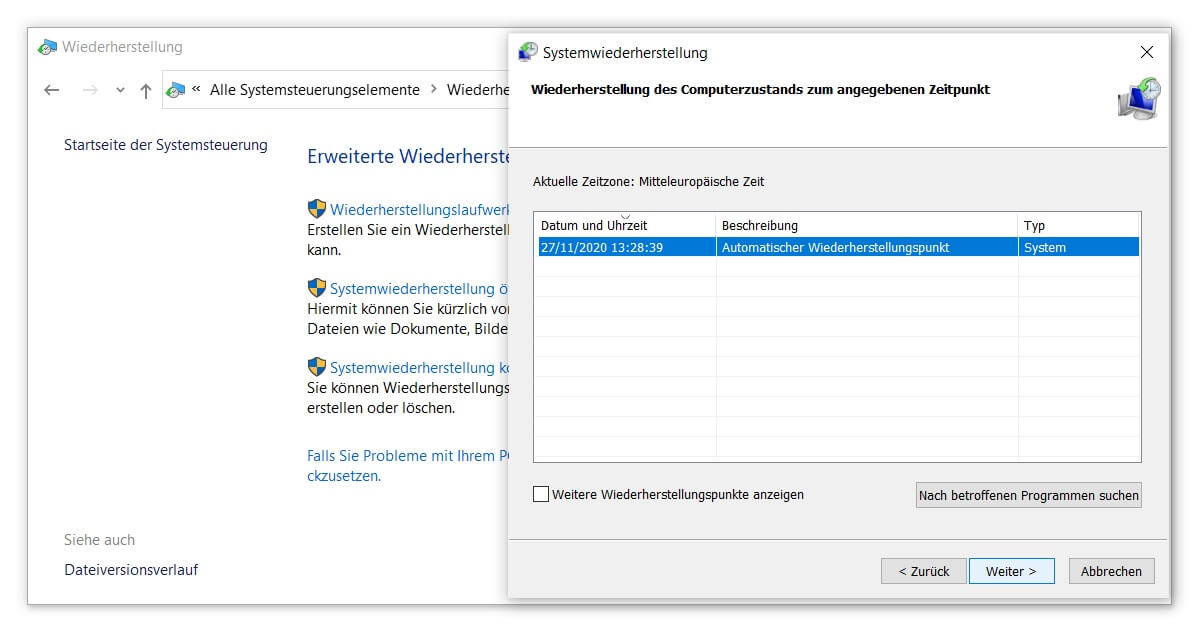As the latest Windows version gets older, more and more features and functions are added. If you like to play around with the settings of your system, you should really think about how to create a restore point in Windows 10. View it like a save point in a video game that saves the current state for the future. This way you can simply leverage out various error messages.
Because the longer Windows 10 is used, the more problems can creep in. In particular the update process is often affected by this. In the worst case, an error can result in you having to completely reset your operating system – and subsequently having to reset everything. So you should know how to go back to a restore point in Windows 10 that serves as a backup, saving you quite some time.

Therefore, we will show you with the help of an illustrative tutorial how to create a restore point in Windows 10 on the one hand and how to go back to it afterwards. Let’s start with step one.
How to Create a Restore Point in Windows 10?
Before you can go back to a restore point, you must first set it under Windows 10. It is recommended that you repeat the following steps at regular intervals so that your backup remains as up-to-date as possible.
- Go to the Windows Control Panel. The quickest way to do this is to enter the term in the search (Windows logo key + S). Alternatively, you can search for control using the Run function (Windows logo key + R).
- Next, click on System and Security, and there again on Security and Maintenance.
- You should see Recovery as one of the options, which you select. You should now be in Advanced Recovery Tools.
- Click on Configure System Restore. In a new window, choose the appropriate drive and continue with Configure.
- Check if Enable Computer Protection is set and confirm with OK. Repeat this configuration for all other drives that are affected by the Windows 10 restore point.
- Then look for the Create button (directly under Configure). All that is missing is a name for your restore point, and it will be saved. That’s it.

Tip: How to create a restore point in Windows 10 that you will recognize? Give it a name with a date. Such names can be assigned much better at a later time, especially if there are several backups.
How to Go Back to a Restore Point in Windows 10?
After the backup has been created, the hard part is already done. If a problem occurs, you can simply fall back on your backup. To do this, follow steps 1 to 3 as described above until you are back in the Advanced Recovery Tools. This time, select Open System Restore. Depending on the type of your user account, you have to enter your password again at this point to access and go back to the Windows 10 restore point.
In the window that opens, click Next once. Then select the appropriate restore point from a list and click Next again. You will be shown various details such as date, time and drive. Check these carefully before you start the process with Finish. As a final note informs you, a system restore cannot be interrupted once it has been started. Unsaved data will therefore be lost.

We hope this article was helpful for you. Now you know a little bit more about the Windows tools and how to create a restore point in Windows 10. If you are interested in the extended possibilities of the operating system, Windows 10 Pro can be worthwhile for you. What exactly the differences to the home version are, our practical guide will explain to you. Have fun and remember: If worse comes to worst, at least you have learned how to go back to a restore point in Windows 10.
